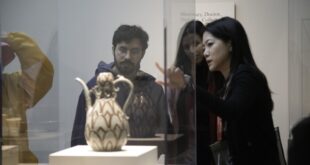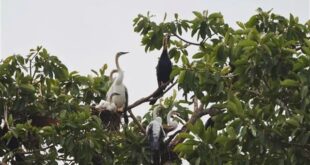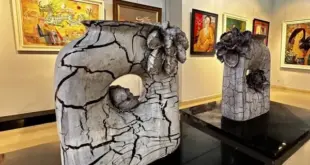HÀ NỘI Archaeologists have found various traces of early humans in a karst mountain cave in Quảng Khê Commune, in the northern province of Bắc Kạn.
They have excavated Thẳm Un Cave and found that the cave’s foundation has been recently stirred up by cattle raised by locals. As a result, a cultural layer from an earlier time was revealed.
A hole of 3sq.m was made to research the culture deposits. Archaeologists have found two cultural layers lying directly on top of one another, without any border layer.
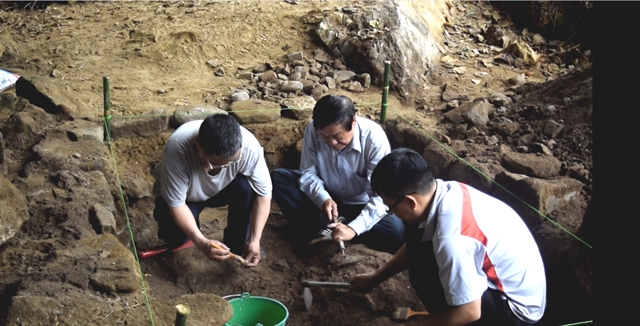
The earlier cultural layer lies lower, measures 0.6-0.65m thick and is fairly hard, formed by clay. The dark brown layer contains objects like stone tools together with animals’ teeth and snail shells.
The cultural layer on top has a light grey colour and is made of crumbled soil. The layer contains fewer objects.
In the hole, traces of four fireplaces have been found at different positions and depths.
Although no tomb has been found in the cave, a total of 700 objects have been recovered, most of which are stone tools made from pebbles taken out of rivers and streams.
“Stone tools found in lower cultural layer have typical features of Bắc Sơn culture [10,000-8,000BC],” Associate Prof Trình Năng Chung, head of the excavation team.
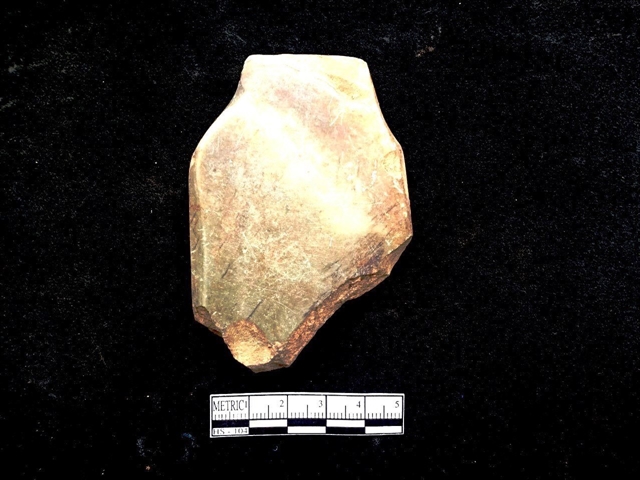
In the higher cultural layer, a well-polished axe was found, the first of its kind to be excavated from the Bắc Kạn mountains.
Various pieces of broken ceramic wares have been found, too. The core ceramic material was mixed with various kinds of vegetables, formed by hand with decorative patterns of twisting and gentle curves. It was baked at a low temperature.
Archaeologists have hypothesised that hunting and gathering fruits and vegetables were important food sources for these early humans.
Chung said based on the findings, researchers concluded that the cave was a residential area for many generations.
The earlier residents belonged to Bắc Sơn culture, dating 5,000 to 6,000 years ago, while the later residents belong to Post New Stone Age – Early Metal Age, dated some 4,000 years ago.
“Together with earlier findings in Ba Bể area, the discovery in Thẳm Un Cave brings us more knowledge of prehistoric cultures in Bắc Kạn and Việt Nam in general.
The cave will be further excavated in the future, he said. VNS

- Reduce Hair Loss with PURA D’OR Gold Label Shampoo
- Castor Oil Has Made a “Huge” Difference With Hair and Brow Growth
- Excessive hair loss in men: Signs of illness that cannot be subjective
- Dịch Vụ SEO Website ở Los Angeles, CA: đưa trang web doanh nghiệp bạn lên top Google
- Nails Salon Sierra Madre
 VnExpress News The News Gateway of Vietnam
VnExpress News The News Gateway of Vietnam
